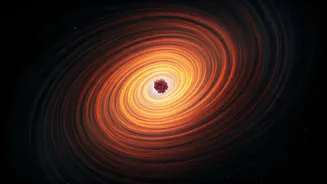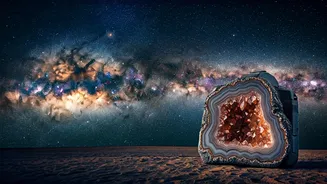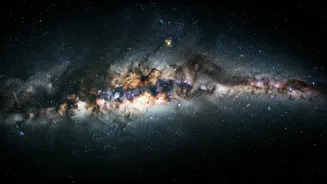Dark Matter Unveiled
Scientists have successfully detected a remarkably small grouping of pure dark matter, employing gravitational lensing to make the finding possible. Gravitational
lensing, where gravity bends and magnifies light from distant objects, enabled them to observe a minute speck of dark matter. This technique is essential because dark matter doesn't interact with light, making it invisible through traditional observation methods. The clump was spotted approximately 10 billion light-years away, highlighting the advanced capabilities of current astronomical instruments. The discovery offers valuable data to help in the understanding of the distribution and nature of dark matter across the cosmos, contributing to a more complete model of the universe's structure.
Lensing: Cosmic Microscope
The discovery hinged on the use of gravitational lensing. This phenomenon occurs when a massive object, like a galaxy, bends the light from objects behind it, magnifying them. The bending of light happens as predicted by Einstein's theory of general relativity. By analyzing the distortions in the light, astronomers can discern the presence of dark matter, even if it cannot be seen directly. The technique proved invaluable in this study, allowing scientists to find the minuscule clump that would otherwise have been undetectable. The ability to use the gravitational pull of galaxies as a natural lens opens up unprecedented opportunities for studying the distribution of dark matter in the universe, helping scientists to map the cosmos and comprehend its hidden components.
Implications for the Universe
This recent discovery holds considerable significance for understanding how the universe is structured. Dark matter, a substance which does not interact with light, makes up about 85% of the universe's mass. Its influence is visible in the formation of galaxies and the large-scale structure of the cosmos. Finding a small clump of pure dark matter helps in fine-tuning models of how dark matter behaves and how it interacts with other elements in space. The finding also aids in understanding dark matter's role in the formation of galaxies and galaxy clusters. Research into this tiny dark matter clump helps deepen scientific understanding of the universe's mysteries, adding to the ever-evolving narrative of cosmology.












